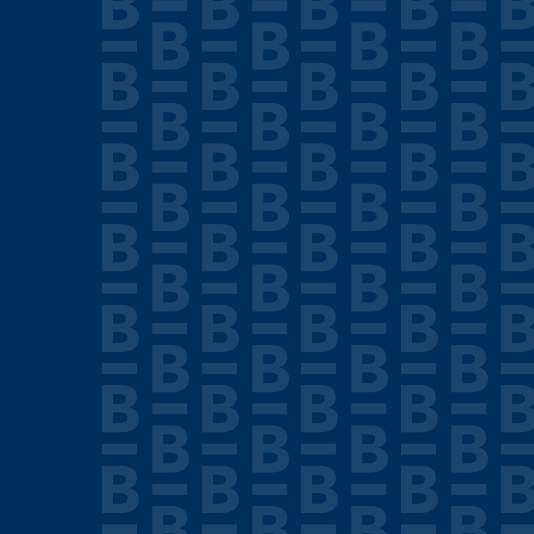I work with many first-time homebuyers, and it’s not uncommon to hear so many people saying they’re overwhelmed with the process. Or more specifically, I also hear a lot of exclamations along the lines of, “What’s with all the acronyms?!?”
Behind each homebuying acronym, there’s really not a lot of mystery. And your mortgage professional is ready to simplify the process and explain each term to you. Here’s a summary of the meaning behind some common ones that my customers ask me about.
Acronyms you’ll see during your search for a home
Acronyms don’t just apply to mortgage terms. In fact, you’ll likely see quite a few as soon as you start looking for homes. Here are some common ones from the home search process.
FSBO: For Sale by Owner
This refers to a home being sold without assistance from a real estate agent or broker. Most likely, the seller is hoping to avoid agent and listing fees.
HOA: Homeowners Association
As many as 20% of America’s homeowners are governed by Homeowners Associations, or HOAs, which may also provide additional community amenities. They do come with a monthly, quarterly or annual fee, so you will want to find out what that is so you can account for it in your budget.
HOW: Homeowners’ Warranty
If you’re looking at new construction, your builder may offer a Homeowner’s Warranty program. This is essentially an insurance program to protect you and your investment in the event of workmanship or structural defects.
MLS: Multiple Listing Service
No, this isn’t a soccer league. In homebuying, the Multiple Listing Service is a database of available properties that your real estate agent can tap into. If a home is officially “on the market,” it’s on the MLS.
Additional terms in your mortgage proposal
When you’re ready to move ahead with a mortgage, there are some additional terms that pop up in the actual mortgage proposal. These help you know the full details of the loan – and payment – you’ll be getting.
LE: Loan Estimate
A lot goes into your mortgage loan proposal above and beyond simply the interest rate. The Loan Estimate will include an itemized list of all fees and costs associated with the loan, making it your most valuable tool when comparing offers from multiple lenders. The Loan Estimate replaced the former "Good Faith Estimate (GFE) that you may have heard of.
PITI: Principal, Interest, Taxes and Insurance
There’s more that goes into a mortgage payment than simply an amortization of the home purchase or mortgage loan amount. It’s actually comprised of four key amounts: Principal, Interest, Taxes and Insurance, or PITI.
You might also sometimes see references to “P&I.” This is Principal & Interest. While it’s an important figure to look at, I recommend considering your full PITI amount to include a more complete picture of your mortgage payment.
PMI: Private Mortgage Insurance
Depending on your mortgage loan program, a 20% down payment may be required. While there are ways to purchase a home without this size of down payment, an additional insurance premium – PMI – may be required if you do so.
Types of loan products or programs
A good mortgage banker will help you evaluate all the specific loan options available to you, and explain what is included in your proposal or GFE. Depending on your own unique circumstances, they may mention some of the following.
FHA: Federal Housing Administration
The Federal Housing Administration, or FHA, is a federal agency that offers mortgage and homebuying assistance programs. They work with lenders like Bremer Mortgage to offer more flexible credit qualifications and lower down payments on mortgage loans.
VA: Veterans Affairs
The U.S. Department of Veterans Affairs, or VA for short, is a federal government agency providing services to service members and veterans. Lenders like Bremer Mortgage work with the VA to offer mortgage loans, often with lower down payment requirements or flexible credit qualifications.
ARM: Adjustable Rate Mortgage
An Adjustable Rate Mortgage, or ARM, will have an interest rate that will reset at predefined times in the life of the loan. Many borrowers like these loans because they often feature a lower interest rate – and thus, lower payment – in the early years of the loan.
APR: Annual Percentage Rate
An APR is the most effective rate to consider when comparing loans as it includes both the interest expense on the loan and all fees involved in procuring the loan.
FRM: Fixed Rate Mortgage
As the name implies, a Fixed Rate Mortgage has one interest rate set for the life of the loan. Many borrowers like these loans for their predictability, as the Principal & Interest portions of the payment will stay the same for the life of the loan. (Taxes and Insurance may cause other fluctuations in your payment, however.)
HELOC: Home Equity Line of Credit
A Home Equity Line of Credit or Home Equity Loan may be a piece of the puzzle in financing your home. Sometimes called a “second mortgage,” these use your home as collateral. A line of credit will be a revolving line which you can pay down or advance from, whereas the loan will be a single fixed-term allowing payments only.
RD: Rural Development / RHS: Rural Housing Service
This is a home mortgage loan guaranteed by the Rural Housing Service.
Getting approved for a mortgage
As your mortgage banker works with an underwriting team to pre-qualify or approve you for your mortgage, these numbers come into play.
DTI: Debt-to-Income
Debit-to-Income is the percentage of your income that goes toward satisfying monthly debt payments. It is a key ratio that mortgage lenders look at when determining your mortgage qualification and amount.
LTV: Loan to Value
The LTV is a ratio of the amount borrowed compared to the appraised value or sale price of a home. Typically expressed as a percentage, the LTV will be used by your lender in determining your qualification, proposing a specific loan type or program, and more.
Working with a trusted advisor
I’ve mentioned the role of mortgage lenders more than once, and for good reason. The mortgage professional you work with is likely well-versed in each of these acronyms, and ready to help take the mystery out of them.
At Bremer Mortgage, we also offer an online Homebuyer Resource Center where you can navigate the mortgage process, download helpful guides and more.

